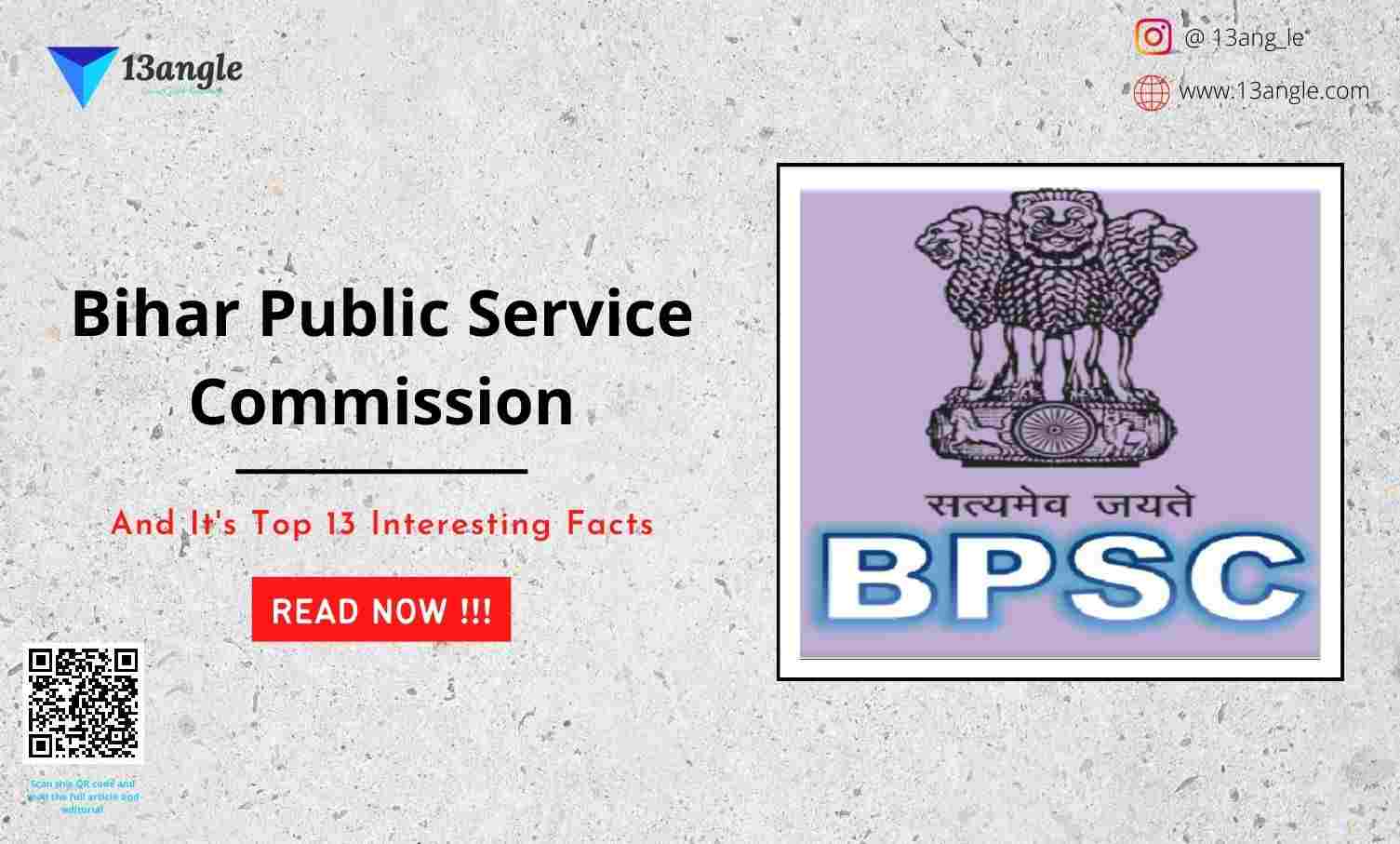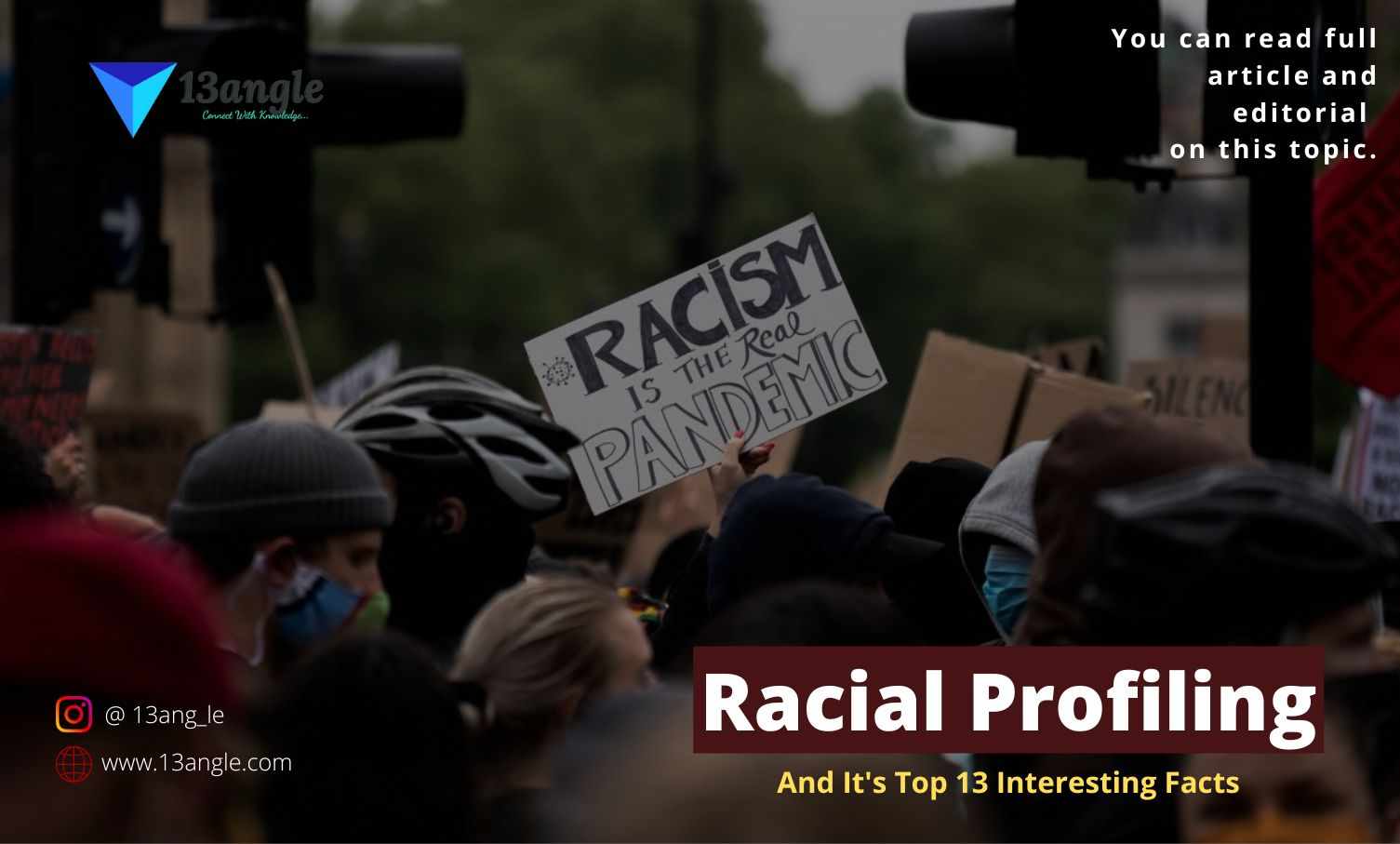
What Are Women's Rights?
Women’s rights are human rights that are guaranteed to all women and girls around the world in order to protect them from violence and discrimination.
These rights include the right to the best possible physical and mental health; the right to an education; the right to own property; the right to vote; and the right to an equal salary. Nearly 70 years ago, the United Nations codified these fundamental human rights for all beings. These women’s rights were first demanded in the 19th century and were later formalized in the Feminist Movement in the 20th and 21st centuries. These rights were supported by legislation, local tradition, and people’s behavior in certain places, but they were derided and dismissed in others. These rights arose mostly as a result of historical and conventional favoritism of boys over girls. These rights are now universally recognized, yet women continue to endure discrimination in this male-dominated society. Even while these rights have a specific place in every country’s constitution, there is still somewhere loopholes that exist.
The Condition Of Women
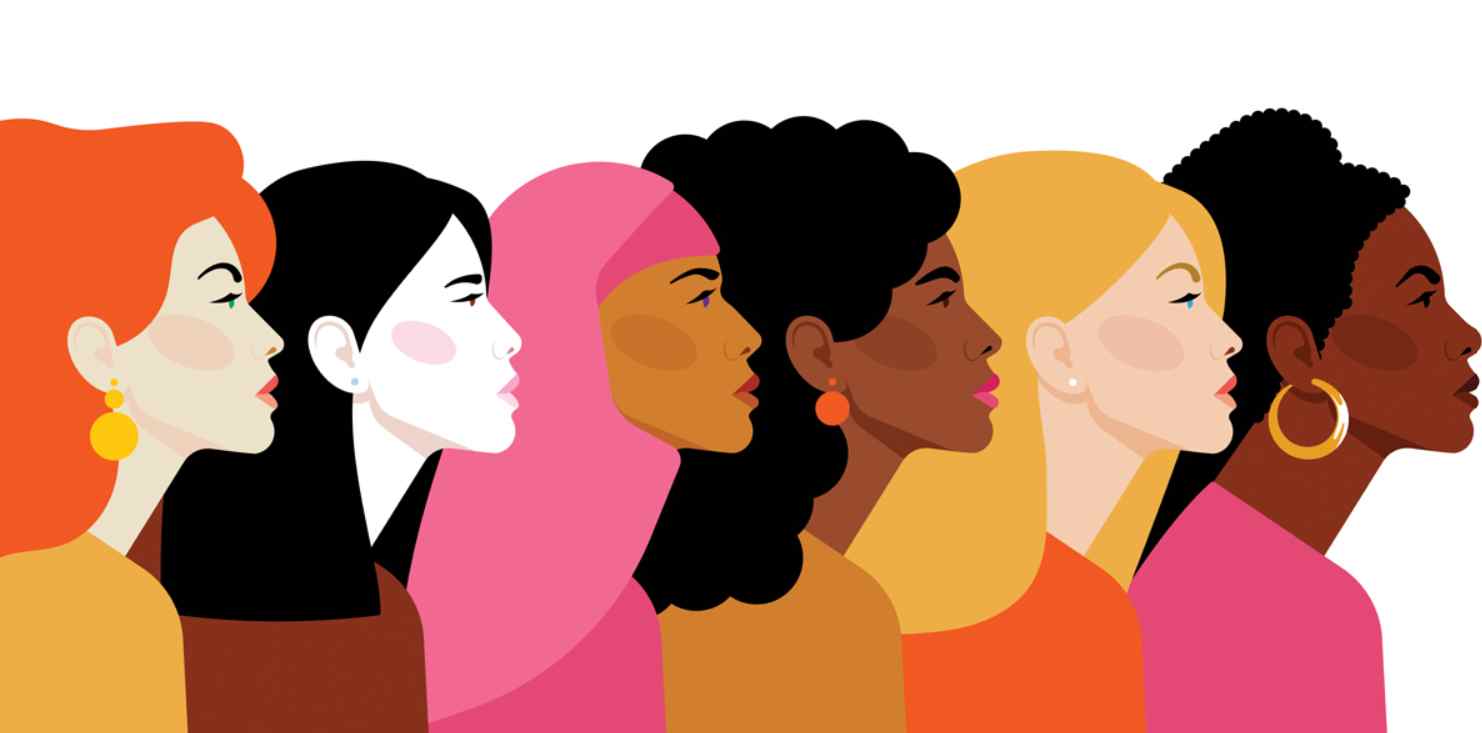
1. In Ancient Times

- Women were esteemed in ancient India, and they made substantial contributions to the welfare of the family and community. The women were accorded high social status, and they felt gratified and pleased. They were given the opportunity to improve their intellectual and spiritual abilities. During this time, there were a lot of female rishis. Polygamy was popular among the upper classes, although monogamy was more common. Sati and child marriage were not often practiced. Women were revered and appreciated in Rig Vedic society, but they were discriminated against in the later Vedic period. Discrimination was most noted in terms of obtaining an education as well as other rights and privileges. With the frequency of child marriage, Sati, polygamy, and the purdah regime, women’s status has deteriorated even further. During the Mauryan period too, women’s condition deteriorated. Men were polygamous and Sati was regarded as an accepted norm. Women were not allowed to go anywhere without the permission of their husbands. During the Gupta period, their status further declined and the most detrimental effects upon the status of women were prostitution and the Devadasi system.
2. In Mediaeval Times

- The dependence of women on their husbands or other male relatives was a prominent feature of this period. Due to the Muslim invasion purdah system became prominent. Muslims was known to have a large harem, which resulted in women being the instrument of sensual satisfaction. The condition of the Hindu widows became more miserable during the medieval period. The rigidity of the caste system denied them the right to freedom and social mobility. The Dowry system was a common phenomenon. Women’s rights reached their pinnacle in the Late Middle Ages, when the patriarchal system imposed further restrictions, partly because women’s social positions endangered the status quo.
3. In Modern Times

In British rule, women’s condition started to change albeit slowly but surely. Inequalities between men and women in education, employment, social right, and so on were eliminated. On the one hand, patriotic social reformers and the British government collaborated on a number of initiatives to improve women’s status and remove some of their struggles.
Since independence, the standing of Indian women has significantly transformed. Women now have equal chances in school, work, and political participation as a result of structural and cultural reforms. Women’s exploitation has been greatly reduced as a result of these developments. The women’s organization was given more freedom and better orientation in order to accomplish its goals. While women still face many hurdles, they also know how to pass these hurdles and will continue to do so.
Need For The Women's Rights
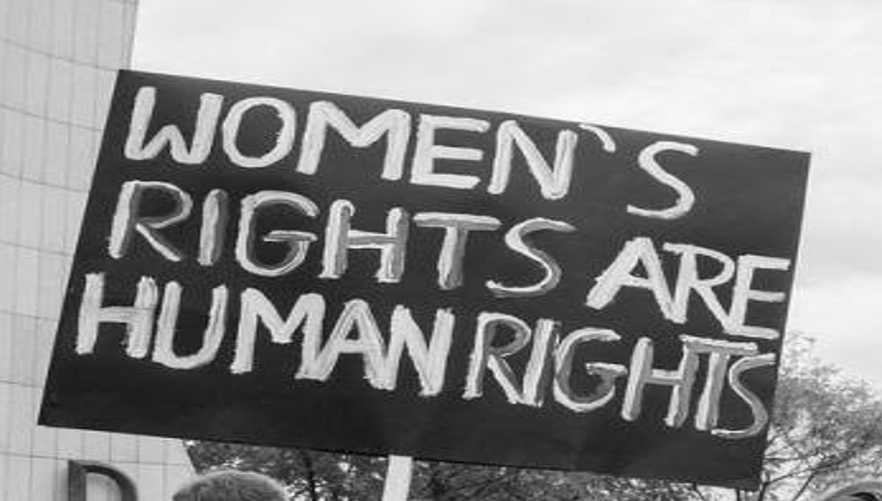
How and why did the need for women’s rights arise? This question is of great importance because this question will help to look through the facade of the society and reveal the truth which lay behind it.
Despite the fact that this issue is huge and many points have layers, there are some that are out in the open for everybody to observe.
1. Discrimination
- Discrimination has been a very formidable and strong weapon wielded against women. Since ancient times women have faced discrimination from society. Women are forbidden to do many things only because of their gender.
Now, what is discrimination?
- According to the jurisprudence of ECHR, the right to freedom from discrimination includes not only the obligation of states to treat in the same way persons who are in analogous situations but also the obligation to treat in different ways persons are in different situations. Women are considered second-class status regarding marriage, health, education, citizenship, parental rights, inheritance, and property rights. These forms of discrimination gave birth to the need for women’s rights. The majority of the women from all over the world are the poorest people even though their contribution is far more than men’s.
2. Right To Education

From the beginning, women’s education has been a contentious issue. Women were thought not to need to study because their primary and only responsibility was to care for their home and to meet their husband’s needs in whatever way was required. It was the opinion that women are inferior to males and should not interfere with men’s work.
In some regions of the world, women’s access to education is still limited. Women account for over two-thirds of the world’s illiterate adults. While it is critical to provide education for women, it is also critical to educate them with knowledge on human rights, non-discrimination, ethics, and gender equality in order for them to grow socially.
The Convention against Discrimination in Education prohibits discrimination in education, with discrimination being defined as “any distinction, exclusion, limitation or preference which, being based on race, color, sex, language, religion, political or another opinion, national or social origin, economic condition or birth, has the purpose or effect of nullifying or impairing equality of treatment in education”.
3. Property Rights
As a man-oriental society, it was said that women do not have any right to parental property. The heir of the property was always the son and in the absence of a son, it goes to the son by marriage, but never a daughter. Husbands gained ownership of their wives’ real land and wages under the common law notion of covertures.
During the 19th century, some women such as Paulina Wright Devis, Elizabeth Caddy Stanton, in the United States and Britain began to challenge laws that denied them their property rights once married.
4. Sexual And Reproductive Rights

Every woman and girl should have the freedom to control their own bodies and make decisions about them. But it was said at the time that when a girl was born, her father and brother had the right to decide the course of her life and that they could marry her to whomever they wanted, never asking the girl’s opinion, and that after marriage, the husband had the right to consummate the marriage and have as many children as he wanted. Sometimes, in order to have a male heir, ladies are forced to continue giving birth, which leads to the death of the woman. Although the prevalence of this problem has decreased over time, it continues to be practiced by a large portion of the world’s population.
This right means women have equal access to health services such as contraception and safe abortions, as well as the freedom to choose whether, when, and with whom they marry. They can also choose whether or not to have children, and if so, how many, when, and with whom.
5. Freedom Of Movement

- The right to roam around freely — not just within our own country, but also to visit others – is known as freedom of movement. However, many women confront significant obstacles in this regard. They may not be allowed to have their own passports, or they may need permission to travel from a male guardian. For example, the personal law of Yemen states that a wife must obey her husband and must not get out of the home without his consent. Even in places where there are no legal limitations, societal and religious conventions such as purdah might limit women’s movement. Various methods have been utilized in the past to restrict women’s freedom of movement, such as foot binding, which was widespread between the 10th and 20th centuries and involved painfully tight tying on the feet of young Chinese girls.
5. Right To Vote
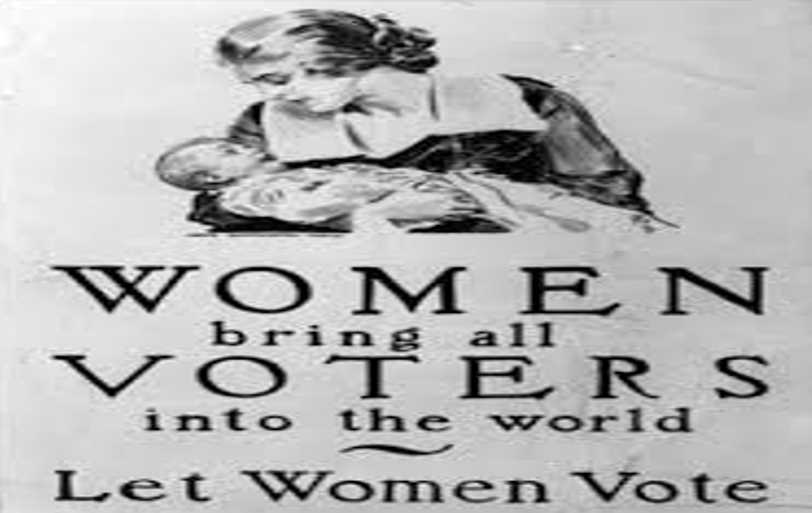
Some women began to ask for, demand, and then struggle and demonstrate for the right to vote – the right to participate in their government and its lawmaking – during the nineteenth century. Many countries eventually extended this privilege, and women began to agitate for the right to vote. Women’s suffrage principles evolved alongside universal suffrage, and women’s suffrage is now considered a right (under the Convention on the Elimination of All Forms of Discrimination against Women).
New Zealand was the first country in the world to grant women the right to vote on a national level in 1893. Despite these advancements, many women still find it difficult to exercise their right to vote in many parts of the world. Consider Syria, where women have effectively been blocked out from political participation, including the ongoing peace process. Although voting is a constitutional right in Pakistan, powerful figures in the community often prevent women from exercising it, and authorities in Afghanistan recently decided to introduce mandatory photo screening at polling stations, making voting difficult for women in conservative areas where most women cover their faces in public.
5. Right To Health
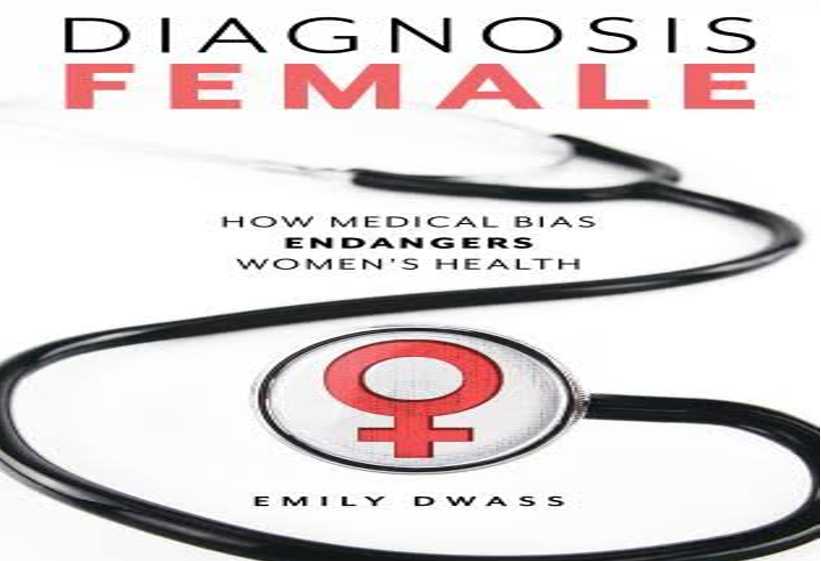
In some regions of the world, women’s health is badly harmed by issues such as inequality, confinement of women to the home, medical workers’ indifference, women’s lack of autonomy, and women’s lack of financial resources.
Health is defined by the World Health Organization as “a state of complete physical, mental and social well-being and not merely the absence of disease or infirmity”. Women’s health refers to the health of women, which differs from that of men in many unique ways.
Young women and adolescent girls are the most vulnerable to HIV/AIDS around the world.
6. Freedom From Violence
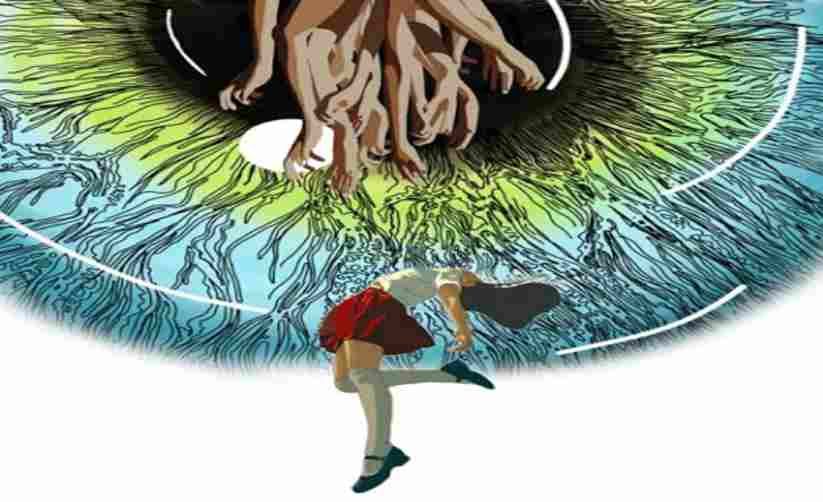
- The UN Declaration on the Elimination of Violence Against Women states, “Violence against women is a manifestation of historically unequal power relations between men and women” and “violence against women is one of the crucial social mechanisms by which women are forced into a subordinate position compared with men.” Individuals, groups, and the state can all commit acts of violence against women. It might happen in a private or public setting. Sexual violence, physical violence, psychological violence, and socioeconomic violence are all examples of violence against women. Honor killings, dowry violence, and female genital mutilation are examples of kinds of violence against women that have a long cultural history. women face gender-based violence as well as sexual violence. Sexual violence happens when a woman’s body is violated without her consent, such as when she is sexually abused physically. Although both men and women can be victims of sexual assault, it is women and girls who are disproportionately affected.
Violence Against Women
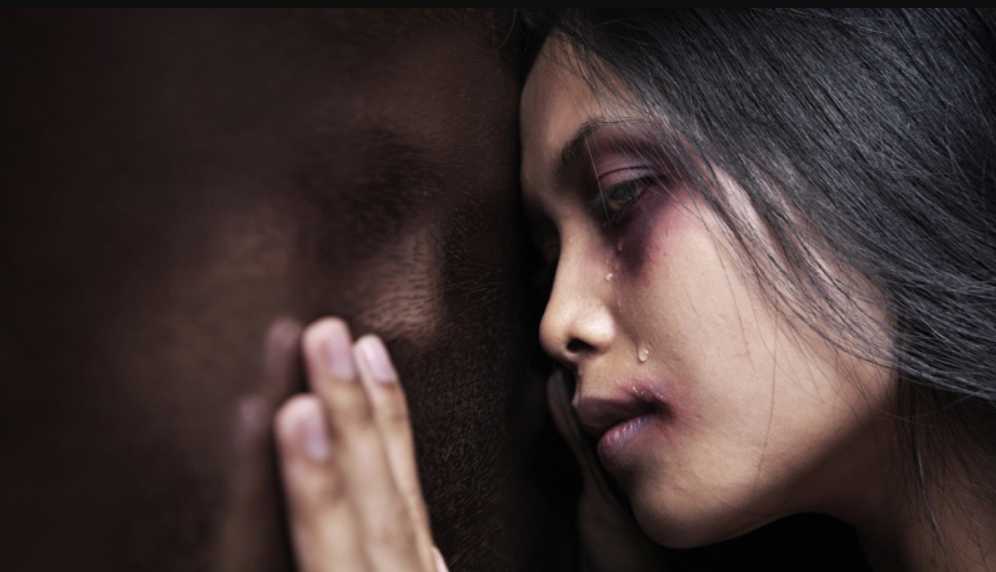
- Violence against women has a long history, yet the frequency and severity of such violence have fluctuated over time and continue to do so today. Whether in society at large or in a personal relationship, such violence is frequently perceived as a strategy for the oppression of women. The perpetrator’s sense of entitlement, superiority, misogyny, or similar views, or his violent disposition, especially against women, maybe the source of such violence. In a 2006 study published on the website of the United Nations Development Fund for Women (UNIFEM), Kofi Annan, the UN Secretary-General, stated:
Violence against women and girls is a problem of pandemic proportions. At least one out of every three women around the world has been beaten, coerced into sex, or otherwise abused in her lifetime with the abuser usually someone known to her.
Although it is difficult to trace the history of violence against women, it is apparent that much of it was tolerated, condoned, and even legalized. It’s linked to the historical notion of women as property and a subservient gender position. To explain the magnitude and history of violence against women, patriarchy and a general world system or status quo in which gender disparities exist and are maintained are highlighted.
According to the UN, “there is no region of the world, no country and no culture in which women’s freedom from violence has been secured.”
Various forms of violence are more common in some parts of the world, particularly in developing countries. India, Bangladesh, and Nepal, for example, are known for dowry violence and bride burning. These countries, as well as Southeast Asia, particularly Cambodia, are linked to acid throwing. The Middle East and South Asia are known for honor killings. Female genital mutilation is primarily present in Africa, with a smaller presence in the Middle East and some regions of Asia. In Ethiopia, Central Asia, and the Caucasus, abduction marriage is common. Violence, trafficking, and forced marriage are all linked to the payment of bride prices in portions of Sub-Saharan Africa and Oceania. Women’s violence can be classified into numerous categories. The Council of Europe’s Gender Equality Commission has identified nine types of violence against women based on the subject and context rather than the life cycle or time period:
- Violence inside the family or domestic violence
- Rape and sexual violence
- Sexual harassment
- Violence in institutional environments
- Female genital mutilation
- Forced marriages
- Violence in conflict and post-conflict situations
- Killings in the name of honor
- Failure to respect freedom of choice with regard to reproduction
Individuals and states have both committed acts of violence. Rape, domestic violence, sexual harassment, acid throwing, reproductive coercion, female infanticide, prenatal sex selection, obstetric violence, online gender-based violence, and mob violence are some of the forms of violence perpetrated by individuals, as well as harmful customary or traditional practices such as honor killings, dowry violence, female genital mutilation, marriage by abduction, and forced marriage. War rape, sexual violence, and sexual slavery during warfare, forced sterilization, forced abortion, police and authoritative personnel violence, stoning, and flogging are all examples of kinds of violence that the government may inflict or condone. Organized criminal networks are often involved in many forms of violence against women, such as human trafficking and forced prostitution.
The first legally binding instrument in Europe in the field of domestic violence and violence against women is The Council of Europe Convention on preventing and combating violence against women and domestic violence, also known as the Istanbul Convention, which came into force in 2014. In its Preamble, the Convention states that
“the realization of de jure and de facto equality between women and men is a key element in the prevention of violence against women”
Movements For Women's Rights
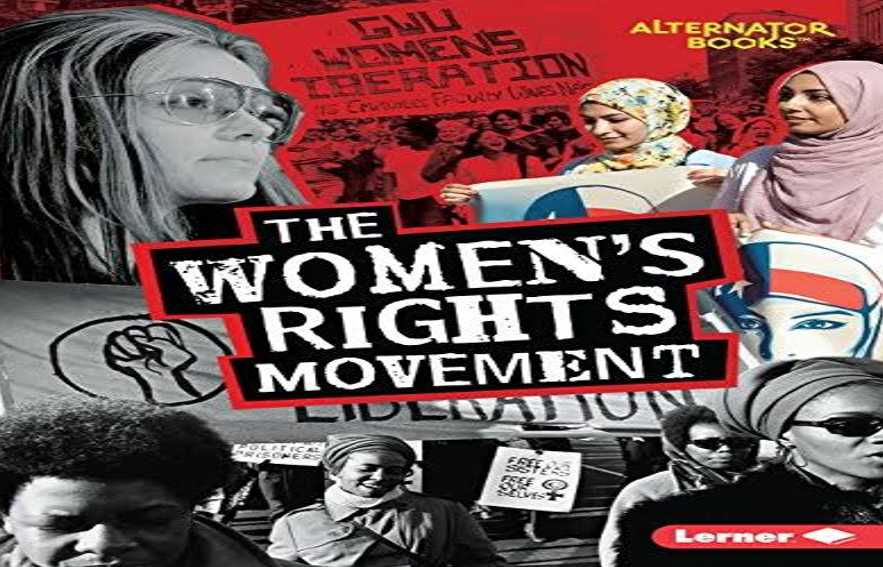
The women’s rights movement is made up of women and men who work and fight to achieve gender equality and to improve the lives of women as a social group.
Despite the fact that the organized campaign for women’s rights began in the nineteenth century, there were some who remained skeptical about women’s genuine status in society. Christine de Pizan, an Italian writer, was one of the first to think and write about women as a group, publishing a book about women’s place in society as early as 1495 and in response to the Declaration of the Rights of Man and Citizen, Olympe de Gouges produced the Declaration of the Rights of Woman and of the Female Citizen in September 1791, with the goal of exposing the French Revolution’s inability to recognize gender equality. De Gouges was charged, prosecuted, and condemned of treason as a result of her works and were immediately executed. The first attempt to create a nationwide movement for women’s rights took place in Seneca Falls, New York in, July 1848. The Seneca Falls Convention, led by Elizabeth Cady Stanton, a young mother from upstate New York, and Quaker abolitionist Lucretia Mott, drew roughly 300 people, the majority of them were women, to chart a course for the women’s rights movement.

The first organized movement for women’s rights was led for the social rights of women. This movement is also called Sufferegete Movement, which was fought for the right to vote for women.
By end of the 19th century, it has spread worldwide through mass demonstrations, the publishing of newspapers, organized debates, and the establishment of international women’s organizations. By the 1920s women have won the right to vote in most European countries and North America.

After a subsequent decade, the women’s rights movement once more became the talk of the town. By the 1960s movements were called ‘feminism‘ or ‘women’s liberation
While the first wave of movement was for social rights, the second wave of movement was for women’s liberation. Liberal feminists pushed for more equal rights legislation and reform of institutions including schools, churches, and the media. Also, this movement played an important role.

Increased awareness of overlapping categories such as race, class, gender, and sexual orientation characterizes the third wave of feminism. It primarily refers to the 1990s American movement.
A number of feminist non-governmental organizations were also founded at this time. Third-wave feminism makes extensive use of media and popular culture to promote its ideals and carry out its operations.

- Cyberfeminism is another name for the movement. ‘Third-wave’ feminism gave birth to this term and movement. Women began to utilize the internet to theories and critique violence against women around this time. Cyberfeminism is said to be the forerunner of ‘networked feminism,’ which refers to feminists as a whole on the Internet, such as mobilizing individuals to take action against sexism, misogyny, and gender-based violence against women. For example, in 2017, the online movement #metoo was a response on social media from women all over the world to the case of Harvey Weinstein, a Hollywood producer accused of sexually assaulting female employees in the film business.
Organization For Women's Rights
The International Council of Women (ICW) was the first women’s organization to work across national borders in support of women’s human rights.
The National Organization for Women (NOW) was founded in 1966 with the goal of achieving equal rights for all women. It was one of the most influential groups in the fight for the Equal Rights Amendment (ERA).
Women for Women International- (WfWI) is a non-profit humanitarian organization that offers practical and moral assistance to women who have survived the war. It was co-founded by Zainab Salbi, an Iraqi American who survived the Iraq-Iran war in 1993.
The National Council of Women in Canada is one of the country’s oldest advocacy organizations, having been founded on October 27, 1857, in Toronto, Ontario. It’s a Canadian advocacy group established in Ottawa that works to improve the lives of women, families, and communities.
The Association for the Protection and Defense of Women’s Rights in Saudi Arabia is a Saudi non-governmental organization dedicated to women’s rights campaigning. Wajeha al-Huwaider and Fawzia al-Uyyouni created it after a 2007 campaign to give women the right to drive.
FEMEN is a radical feminist activist group based in Ukraine in 2008 that aims to safeguard women’s rights. Topless rallies against sex tourism, religious institutions, sexism, homophobia, and other social, national, and international issues made the group famous around the world.
The Honor for Women National Campaign is a national effort to reduce violence against women in India. Manasi Pradhan, a women’s rights activist, launched this campaign in 2009.
Legal Protection For Women In India
As a result of several initiatives for women’s rights, society, and the law began to take note of violence against women. People gave women a place in their minds, and the law provided women a place in the shape of legal protection. It is also known as legal rights for women, and it pertains to women’s social and human rights. On 10 December 1948, The United Nation adopted the Universal Declaration of Human rights, which proclaims that all human beings are born free and have an equal right to dignity. Similarly, Indian legislation provides legal aid to women.
In India, women have both Constitutional Rights and Legal Rights.
Constitutional Rights Of Women
Article 14 – provides for equality before the law or equal protection of the laws within the territory of India.
Article 15 – forbids discrimination on grounds only of religion, race, caste, sex, or place of birth. However, article 15(3) allows for positive discrimination in favor of disadvantaged groups such as women and children.
Article 16(2) – provides that no citizen shall be discriminated against or be ineligible for any employment or office under the state on the ground of sex.
Article 39(a) – provides the state to secure for men and women equally the right to an adequate means of livelihood
Article 39(d) – provides the state to secure equal pay for equal work for both Indian men and women.
Article 39(e) – provides that the state is required to ensure that the health and strength of women workers are not abused and that they are not forced by economic necessity to enter avocations unsuited to their strength.
Article 42 – provides that the state shall make provision for securing just and humane conditions of work and maternity relief.
Article 51-A (e) – provides that it shall be the duty of every citizen of India to renounce practices derogatory to the dignity of women.
Article 243-D(3) – provides that one-third of the total number of seats to be filled by direct election in every Panchayat shall be reserved for women.
Article 243-D(4) – provides that one-third of the total number of offices of Chairpersons in the Panchayats at each level shall be reserved for women.
Article 243-T (3) – provides that one-third of the total number of seats to be filled by direct election in every Municipality shall be reserved for women.
Article 243-T (4) – provides that the offices of Chairpersons in the Municipalities shall be reserved for women in such manner as the State Legislature may provide.
Under Various Indian Legislation
- Protection of Women from Domestic Violence Act (2005)
- The Immoral Traffic (Prevention) Act, 1986 (PITA)
- Indecent Representation of Women (Prohibition) Act (1986)
- Commission of Sati (Prevention) Act (1987)
- Dowry Prohibition Act (1961)
- Maternity Benefit Act (1961)
- Medical Termination of Pregnancy Act (1971)
- Pre-conception and Pre-Natal Diagnostic Techniques (Prohibition of Sex Selection) Act (1994)
- Equal Remuneration Act (1976)
- Muslim Women (Protection of Rights on Divorce) Act (1986)
- Hindu Succession Act (1956)
- Minimum Wages Act (1948)
- Mines Act (1952) and Factories Act (1948)
- The Sexual Harassment of Women at Work Place (Prevention and Protection) Act (2013)
- The Protection of Children from Sexual Offences (POCSO Act) 2012
General Law
Right to free aid – When a woman goes to the police station without being accompanied by a lawyer, she has a right to get legal aid.
Right to privacy – A woman who has been raped has the right to make her statement in private in front of the magistrate, without being overheard by others, or in-person with a lady constable or police officer. The authorities will be required to provide the victim privacy under section 164 of the Criminal Procedure Code, rather than stressing her in front of the public.
Right to Zero FIR – As according to the Supreme Court ruling a rape victim can register her police complaint from any police station under the Zero FIR.
Right to no arrest – According to a Supreme Court ruling, a woman cannot be arrested after sunset and before sunrise. Except, in case the woman has committed a serious crime, the police require to get it in writing from the magistrate explaining why the arrest is necessary during the night.
Right to not being called to the police station – Section 160 of the Criminal Procedure Code states that women cannot be called to the police station for interrogation. The police can interrogate a woman at her residence in the presence of a woman constable and family members or friends.
Right to confidentiality – Under no condition, the identity of the rape victim can be revealed. Section 228-A of the Indian Penal Code makes the disclosure of a victim’s identity a punishable offense.
Victims Of Women's Rights
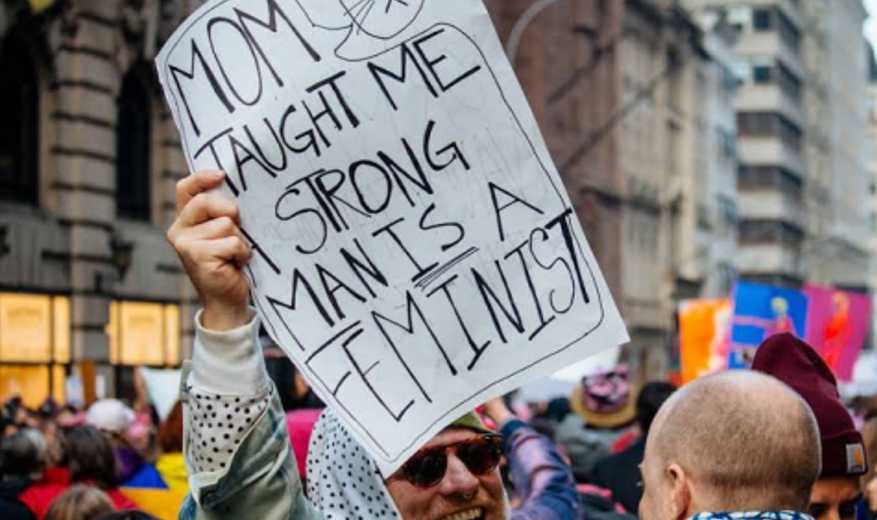
- True, women often suffer as a result of a man-centered culture, which prompted the need for women’s rights, which is still necessary today, but there are always those occasions where men are the victims of these rights. Throughout history, there is evidence where the accuser is the accused itself. While, it is important to heed the plea of women, it is also our duty to not blindly follow these accusations without prior investigation. There should be a clear understanding that women can also commit crimes and victimize men.
Phaedra – A Greek mythological also contains evidence of false accusations against men. While there are many versions of the story of Phaedra and Hippolytus, they all share the same structure, where Phaedra falsely accused her stepson Hippolytus of rape, which resulted in his death.
Potiphar’s wife – Hebrew Bible and Quran also tell a story of false accusation, where the wife of the captain of Pharaoh’s guard Potiphar in the time of Jacob and his twelve sons falsely accused Joseph of attempted rape after he rejected her sexual advances, resulting in his imprisonment.
Scottsboro Boys – They were nine African American teenagers, ages 13 to 20, accused in Alabama of raping two white women in 1931. This later proved to be false accusations because of the racism.
Brian Keith Banks – He is a former American football player. In 2002, he was falsely accused of rape by classmate Wanetta Gibson, he spent close to six years imprisoned and five years on parole. Later true got revealed when the accuser confessed the fabrication of her lie.
Duke lacrosse case – This was a widely reported criminal case in 2006, in Durham, North Carolina, the United States in which three members of the Duke University men’s lacrosse team were falsely accused of rape by a student of North Carolina Central University.
Parkinson case – In 2014 Daniel Jones was falsely accused of rape and domestic violence by his former fiancé Sarah-Jane Parkinson.
Vishnu Tiwari – In September 2000, Vishnu was arrested by the police in a rape case where the woman, her husband, and her father-in-law accused Vishnu Tiwari of sexual as well physical assault of the woman when she was five months pregnant. He spent two decades of his life in jail due to this accusation.
Famous Feminist
- Feminists are those who have battled for women’s rights and helped to reform society so that men and women can live in complete harmony. In a variety of ways, they have aided in bringing women’s equality to the forefront of society’s consciousness.
Simone de Beauvoir – An outspoken political activist, writer, and social theorist. In 1949, de Beauvoir published The Second Sex, a groundbreaking book that is recognized for laying the groundwork for modern feminism. This was later banned by the Vatican.
Marlene Dietrich – She was a Hollywood actress, who wore trousers and men’s suits when it was considered scandalous and taboo. She was famously quoted saying, “I dress for the image. Not for myself, not for the public, not for fashion, not for men.” Her way of dressing influenced the women of her next generation.
Gloria Steinem – She is aptly referred to as ‘Mother of Feminism‘. She led the women’s liberation movement throughout the 1960s & 70s and is co-founder of ‘Ms. Magazine’, feminist-themed magazine. In 2013 she was honored with the Presidential Medal of Freedom.
Angela Davis – Davis played a crucial part in the Civil Rights movement. She has been a trailblazing voice for black women, most recently serving as an honorary co-chair for the 2017 Women’s March on Washington.
Barbara Walters – Walters was the first female co-host of a news show and the first female co-anchor of an ABC News evening newscast. Walters led the way for women in the workplace, not only in journalism, from the 1970s to the present.
Madonna – She has built her career as a ‘Queen of Pop’ and encouraged women to take unabashedly ownership over their sexuality and lives.
Malala Yousafzai – Malala Yousafzai rose to prominence after publishing her memoir, I Am Malala, which chronicled her brave journey as a young Pakistani student battling for access to education. Malala has been traveling the world since then, campaigning for women’s and children’s educational rights through her nonprofit, The Malala Fund.
Chimamanda Ngozi Adichie – Adichie has become a vital author in the modern-day feminist movement. Most known for her is the “We Should All Be Feminists” TED Talk. Americanah, We Should All Be Feminists and Dear Ijeawele, Or a Feminist Manifesto in Fifteen Suggestions, her most prominent pieces which have been instrumental in advocating for women’s rights and representing African culture.
Emma Watson – The actress, who is one of the generation’s newest feminist voices, captivated the world with her poignant address in front of the United Nations, which launched a new effort for gender equality. Watson’s efforts for the United Nations reminded us all that feminism is a fight for men as well as women. Since then, she’s started the #HeForShe movement, started her own feminist reading club, and sparked a lot of debate about what it means to be a feminist today.
Tarana Burke – Burke’s work as an inspiring leader for victims of sexual assault and harassment has enabled hundreds of thousands of people around the world to speak out about their own sexual assault experiences and has aided the Time’s Up campaign in Hollywood. Burke started the #MeToo movement back in 2006, more than a decade before it was heard around the world.
Top 13 Amazing Facts About Women's Rights
Women’s rights are Human rights for women.
Women’s rights arose mostly as a result of historical and conventional favoritism of boys over girls.
Women’s rights include all aspects- social, physical, mental, economic, and intellectual.
71% of all human trafficking involves women and girls – mainly for sexual exploitation (source. UNODC, 2016).
Around 650 million women across the globe were married before the age of 18 (source. Unicef, 2018).
The women’s suffrage movement was an essential emphasis of the women’s rights movement.
At Seneca Falls, New York, the first women’s rights conference was organized in 1848.
Saudi Arabia is the Most Recent Country to Allow Women to Vote in 2015.
The US is one of only eight countries in the world that does not provide any form of paid maternity leave by federal law.
On average, women spend more than twice as much time doing unpaid work as males over the world.
The first college to admit women was Salem College, founded in 1772 as a primary school.
Before the Pregnancy Discrimination Act of 1978, women could be fired if they were pregnant.
2017 marked the first time that the Navy has had female applicants for SEAL Officer, Special Boats Unit.






